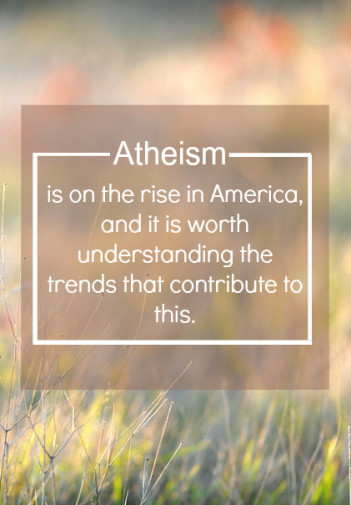Atheism is on the rise in America, and it is worth understanding the trends that contribute to this. The Barna Group has spent a considerable amount of time studying the unchurched but has also published a study on the state of atheism in America.
The Barna study lumps together atheism and agnosticism. An atheist would be someone who doesn’t believe that God exists. An agnostic would be someone who is not sure if God exists but might be open to the possibility. Here are five demographic shifts among skeptics.
First, they are younger. Twenty years ago, about 18 percent of skeptics were under 30 years old. Today that proportion has nearly doubled to 34 percent.
Second, they are more educated. Two decades ago, one-third of skeptics were college educated, but today half of these skeptics have a college degree. Third, many of them are women. Their percentage has nearly tripled. This is not due to men’s number decreasing but are due to more women questioning faith.
Fourth, skeptics are more racially diverse. Whites represented 80 percent of skeptics 20 years ago. That percentage has decreased some because people of other ethnic groups are beginning to accept a world without God. Finally, skeptics are more dispersed regionally. The Northeast and West are still hotbeds of atheism and agnosticism, but other regions of the country also have skeptics.
We shouldn’t be surprised by these percentages. Young people grow up in a increasingly secular culture and then head off to college to confront professors and students who often aggressively promote atheism and agnosticism.
Meanwhile, some churches have been willing to compromise on biblical absolutes. Many others shun rational defense of the faith or imply that Christianity is a private faith that does not need to be defended from the arguments of atheists.
This latest survey demonstrates we have work to do to prepare youth and adults for a secular world.
 Listen Online
Listen Online Watch Online
Watch Online Find a Station in Your Area
Find a Station in Your Area












 Listen Now
Listen Now Watch Online
Watch Online
